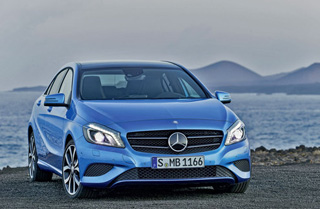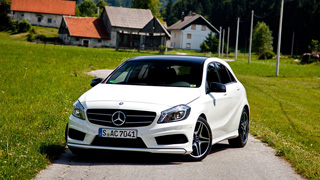Test drive Mercedes Benz A-class W176 since 2012 Hatchback
Layout - the key to success
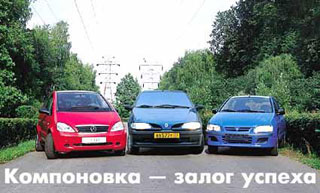 Throughout the history of its existence, appearance, and in particular the layout of the car repeatedly underwent revolutionary and evolutionary changes. And many times fresh ideas and solutions, at first perceived in hostility, gradually gained popularity, and then became familiar and even banal to yawn. And every time you think why ten years ago stupid designers have not thought of that?
Throughout the history of its existence, appearance, and in particular the layout of the car repeatedly underwent revolutionary and evolutionary changes. And many times fresh ideas and solutions, at first perceived in hostility, gradually gained popularity, and then became familiar and even banal to yawn. And every time you think why ten years ago stupid designers have not thought of that? It would be interesting to transfer auto -engineers and designers who lived and created thirty, fifty, seventy years ago, these days. What would be their reaction to the style and appearance of a modern car? For some reason, it seems to me that most of them would anathematize those innovations to which they remained more than one evolutionary level, but a whole staircase of conflicting and complex transformations in the technical and artistic and design improvement of the car. And what can we say about us, ordinary mortals, consumers, and most often conservatives in spirit? Therefore, the progress of automotive thought would probably go faster, if it is not the caution of ordinary buyers who do not want to finance new ideas of developers and choose the usual and long -tested.
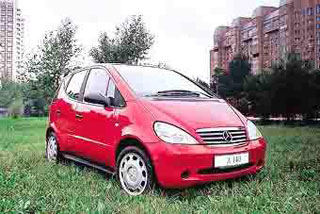 Today we’ll talk about one of the types of bodies of cars, which has already made its way to the market. And soon, it seems to me, such cars will be moved, or even replaced by competitors.
Today we’ll talk about one of the types of bodies of cars, which has already made its way to the market. And soon, it seems to me, such cars will be moved, or even replaced by competitors. We turn to small -leafs. Back in the 50-X60s, they were a reduced copy of medium and large classic layout cars. The obvious disadvantages of this are close salon and trunk. In the 70s, the market almost won the hatchback with a drive to the front axle. And so far it is precisely this type of body in classes A, B, C, and even D is the most common in the world. But in the back this favorite of the public breathes, sometimes sniffing and giggling, a new idol: a layout solution that appeared relatively recently gained more and more popularity.
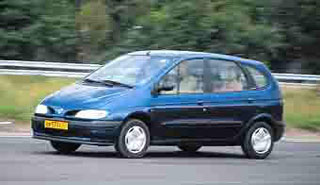 Of course, I mean mini- and micro. Skeptics will say attempts to apply the so -called car layout on small classes before. Let us recall at least Fiat Multipla about forty years ago (with three rows of seats), created on the basis of a six-hundred-core baby, the prototype of our humpbacked zaz, and about Japanese crumbs, containing six or seven fragile representatives of the Asian race or three or four Europeans. Yes, and Daewoo Damas is now being collected in Uzbekistan. But all these separate specimens were designed either for amateur weeps, or for a large family, which managed to scrape off the four-wheeled crew. It’s just that the market was not ready yet. The current audience is already ready to absorb single-volume cars with appetite and in large quantities that occupy a little less space on the road than the Golf class cars, but in the internal volume exceeding large station wagons. And, fortunately, the designers did not follow the path of a simple reduction in the minibus by one and a half to two times.
Of course, I mean mini- and micro. Skeptics will say attempts to apply the so -called car layout on small classes before. Let us recall at least Fiat Multipla about forty years ago (with three rows of seats), created on the basis of a six-hundred-core baby, the prototype of our humpbacked zaz, and about Japanese crumbs, containing six or seven fragile representatives of the Asian race or three or four Europeans. Yes, and Daewoo Damas is now being collected in Uzbekistan. But all these separate specimens were designed either for amateur weeps, or for a large family, which managed to scrape off the four-wheeled crew. It’s just that the market was not ready yet. The current audience is already ready to absorb single-volume cars with appetite and in large quantities that occupy a little less space on the road than the Golf class cars, but in the internal volume exceeding large station wagons. And, fortunately, the designers did not follow the path of a simple reduction in the minibus by one and a half to two times. Most of the companies have already included Mikrovenna in the production range, developed on the platforms of one of the families in production or only preparing to stand on the conveyor. Those who were not orientated on time, biting their elbows, catch up.
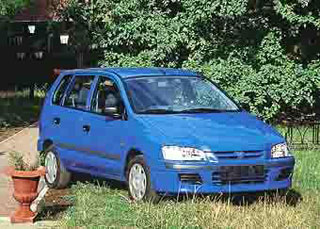 We decided to take three similar cars for a test. So, get acquainted: Renault Megane Scenic, a representative of almost the most extensive family, consisting of a sedan, three- and five-door hatchbacks, station wagons, coupe and even a convertible. As an intrusive advertising machine was impressive for us for this life. Well ... Let's check.
We decided to take three similar cars for a test. So, get acquainted: Renault Megane Scenic, a representative of almost the most extensive family, consisting of a sedan, three- and five-door hatchbacks, station wagons, coupe and even a convertible. As an intrusive advertising machine was impressive for us for this life. Well ... Let's check. Almost coinciding with Scenic in dimensions, a new, just went on sale by Mitsubishi Spas Star, Mikroven with a space prefix on a shortened platform from Carisma, and even less than Lanser.
The third experimental is a little apart this scandalously famous Mercedes-Benz A-Klasse, which the manufacturer first declared itself as a company that produces not only solid rear-wheel drive sedans, and whose premiere was repeatedly delayed for well-known reasons. For the Ascendants, I recall at the stage of refinement and testing A-class in publicly put on the ears twice, that is, they turned over the double rearrangement of elk dough (imitating an unexpected appearance on the trajectory of the movement of the obstacle, for example, moose).
Daimler-Benz laid a lot of effort to increase the stability of this small, but high car. But it does not fit into our company, firstly, because in short, half a meter, and secondly, this car was created not on a common platform with something else, but on its own personal. But, given the close indicators by weight and power, we risk comparing them together.
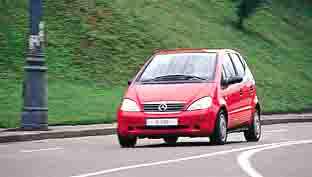 At first sight
At first sight Put cars in a row and look at the look from afar. All three due to growth seem a little more than they really are. Mitsubishi has a one and a half volume (that is, the hood protrudes slightly), and Scenic and a-Ashka finished single-combatants. Everyone has five doors, the rear opening up.
Merce, as expected, has a characteristic star lattice and slanting family optics. The profile is extremely dynamic, although it is fragmented visually into five glasses on each side, and the waist line is fervently curved along the rear door and the rack upstairs. The car resembles a small, restless and playful dog that jumps beside you, but does not allow itself to stroke. The wiper brushes work according to a well -forgotten old scheme not in parallel, but towards each other, overlapping. Very low, at least outwardly landing over the road (here it is the desire for stability!) And wide low -profile tires.
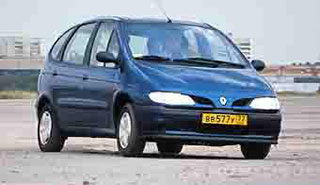 The Frenchman inherits the generic and family features no less. Remove the emblem and do not indicate Renault. SCENIC Like a swollen Megane Classic, the roof was visually swollen, especially in the middle of the cabin. Healthy thoroughbred muzzle with predatory nostrils and French large front overhang. Huge area of \u200b\u200bglazing. I would like to quickly open all the doors and launch a fun company gathered on barbecue, or put three or four children from a large and friendly family on the rear sofa.
The Frenchman inherits the generic and family features no less. Remove the emblem and do not indicate Renault. SCENIC Like a swollen Megane Classic, the roof was visually swollen, especially in the middle of the cabin. Healthy thoroughbred muzzle with predatory nostrils and French large front overhang. Huge area of \u200b\u200bglazing. I would like to quickly open all the doors and launch a fun company gathered on barbecue, or put three or four children from a large and friendly family on the rear sofa. The Japanese, in the sense of the exterior, looks simpler. Especially from the rear. More square compared to rounded A-class and Megane, on small wheels. But don't think that the car is ugly or
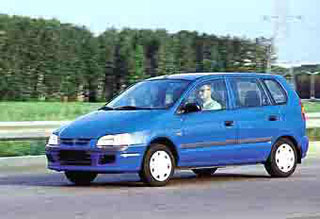 non -modern. Its unobtrusive forms are concise and thought out. Mikrovenn is decorated with rear lights in the rack racks and fashionable transparent caps of head headlights.
non -modern. Its unobtrusive forms are concise and thought out. Mikrovenn is decorated with rear lights in the rack racks and fashionable transparent caps of head headlights. In more detail
But you just have to climb into the cars, as you understand that the appearance for this class is not the most important thing.
The first thing that amazes both in Mitsubishi and in Renault, this is space, space in everything. Above your head is full of space. From the driver’s chair to the lobby you will not reach your hand, and the elbow on the armrest does not rest against the passenger. Kaputov, of course, is not visible, and the front bumper is parking in the battleship almost immediately behind the lower edge of the glass. The bus and the steering wheel is painfully great, it is tilted from the vertical plane, and at first it is a little unusual.
At first glance, the SCENIC salon looks more important, but sitting in front is still more convenient in the Spas Star. The display is also good here with the output of the radio and climate installation data.
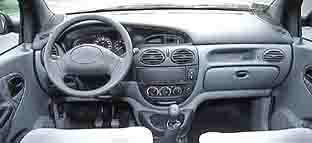 Renault pamper passengers with the most complete set of cup holders, drawers and tables. There are also the most options for transforming the back row of seats. In addition, on Mitsubishi and a-class, the seats are folded into two parts, and on Megane for three. It is interesting that the seat belts for all passengers are three -point behind in the ceiling three coils with two buckles stretch, pass through one latch and fix the other. Unusual! The rear seats everywhere have longitudinal adjustment, which allows to vary between a comfortable landing with elongated legs and a clamped, almost standing position (in the event that the entire volume of the trunk is used). Naturally, based on the length of the car, and the spaciousness of the back is most of Scenic, a little smaller in Space Star and very little Mercedes, which is completely crowded. It is especially inconvenient to get out in A-Class and sit down to pull off the wheel arches with trousers or coats.
Renault pamper passengers with the most complete set of cup holders, drawers and tables. There are also the most options for transforming the back row of seats. In addition, on Mitsubishi and a-class, the seats are folded into two parts, and on Megane for three. It is interesting that the seat belts for all passengers are three -point behind in the ceiling three coils with two buckles stretch, pass through one latch and fix the other. Unusual! The rear seats everywhere have longitudinal adjustment, which allows to vary between a comfortable landing with elongated legs and a clamped, almost standing position (in the event that the entire volume of the trunk is used). Naturally, based on the length of the car, and the spaciousness of the back is most of Scenic, a little smaller in Space Star and very little Mercedes, which is completely crowded. It is especially inconvenient to get out in A-Class and sit down to pull off the wheel arches with trousers or coats. 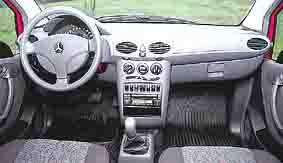 A-class is generally different in everything (from others). Despite the lack of traditional wooden inserts, you understand that you are going to Merce. All governing bodies are similar to older brothers from Stuttgart: the same one steamed switch, familiar in many generations of cars, the same three round heating and ventilation handles. The steering wheel is also located in the usual position. We wrote off a somewhat frivolous dashboard for a common fun design. The absence of not only watches on the shield, but even the temperature sensor, what if you boil it?
A-class is generally different in everything (from others). Despite the lack of traditional wooden inserts, you understand that you are going to Merce. All governing bodies are similar to older brothers from Stuttgart: the same one steamed switch, familiar in many generations of cars, the same three round heating and ventilation handles. The steering wheel is also located in the usual position. We wrote off a somewhat frivolous dashboard for a common fun design. The absence of not only watches on the shield, but even the temperature sensor, what if you boil it? The location behind the wheel in A-class is really good for the ceiling. I'm sitting highly far. The explanation for this is a double sandwich floor, which takes on all energy in case of impact. Four (!) Eirbeg complement the high level of passive security. On such a class and side in the standard, this is what the company means!
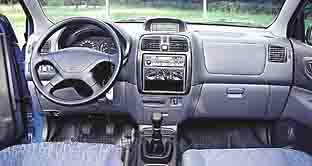 The outer mirrors were slightly upset due to the original silhouette of the body, they are somewhat behind, which is customary, and you have to noticeably turn their heads to cast a look at what is happening behind.
The outer mirrors were slightly upset due to the original silhouette of the body, they are somewhat behind, which is customary, and you have to noticeably turn their heads to cast a look at what is happening behind. The trunk, which is natural, are great, as far as possible, and most importantly are deep. At the A-class no less, but I didn’t like the other: you should open the luggage compartment with two hands on the button with one, and pull the other by the handle. On Mitsubishi and Renault, this operation is performed easier: pulled up behind the key on the back plane of the door and opens, more precisely, it will rise.
Will we ride?
Let's ride! We will not hide, we did not count on special impressions of riding. What do you take from a family car? If only I went and did not break. Therefore, we deliberately took a car with the weakest engines to the test: Mitsubishi 1.3 l, Mercedes 1.4 liters and Renault with an engine of 1600 cm3, moreover, 75-horsepower (and sometimes 90 hp).
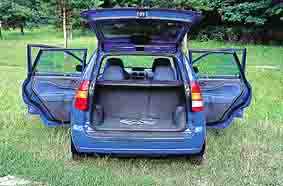 Space Star started so vigorously and easily that I doubted it could not 1300, but 1800 cubes? I open the hood, look at the documents. No, everything is normal. A tiny motor. Yes, truly the Japanese are well done. How he drags! In the city, I leave the traffic light much more confident in the stream, and only then the tinted BMW and Audi, offended by the agility of my blue crumb, will overtake me with a whistle with a whistle. For urban conditions, it probably makes no sense to put powerful, gluttonous engines on small cars. Somewhere to eighty, you accelerate without straining, and only in a hundred speed set ceases to happen as if playing and jokingly. In other words, in the autobahn you will not feel like a hero, but in the city it is quite.
Space Star started so vigorously and easily that I doubted it could not 1300, but 1800 cubes? I open the hood, look at the documents. No, everything is normal. A tiny motor. Yes, truly the Japanese are well done. How he drags! In the city, I leave the traffic light much more confident in the stream, and only then the tinted BMW and Audi, offended by the agility of my blue crumb, will overtake me with a whistle with a whistle. For urban conditions, it probably makes no sense to put powerful, gluttonous engines on small cars. Somewhere to eighty, you accelerate without straining, and only in a hundred speed set ceases to happen as if playing and jokingly. In other words, in the autobahn you will not feel like a hero, but in the city it is quite. A-class is also a nostril in the nostril. But you still feel less solid and confident. On a man, in such a cool car, they look with an ironic smile. Perhaps this crew is soon for the ladies. In addition, he is the smallest of the whole trinity. Mersik can even park across a number of cars looks very impressive.
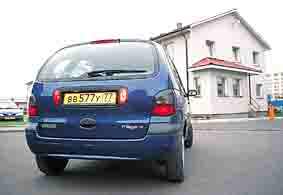 MEGANE was slightly upset by dynamics, and at the same time a pendant that showed itself noisy and by passing the irregularities and by the sound of the engine. The most capacious and mini -eveerate of all, it turned out to be the most waxy in turn. The German, after processing the suspension, is certainly at a height. It stands on the road as a glove. Our attempts, despite the acquitted fears, are hanging into the air when passing the snakes at least one of the wheels was unsuccessful.
MEGANE was slightly upset by dynamics, and at the same time a pendant that showed itself noisy and by passing the irregularities and by the sound of the engine. The most capacious and mini -eveerate of all, it turned out to be the most waxy in turn. The German, after processing the suspension, is certainly at a height. It stands on the road as a glove. Our attempts, despite the acquitted fears, are hanging into the air when passing the snakes at least one of the wheels was unsuccessful. The most pleasant surprise of Mitsubishi Space Star is an amazingly comfortable riding of pits, potholes and tram rails. All irregularities remain as if deep under the bottom. By the way, the Japanese’s clearance of even high borders does not reach the thresholds of the Japanese. The exception is the rear overhang, melting under it a transversely located muffler tank. How many times the owner will catch him during the congresses from the sidewalk and parking back, you can only guess.
Our tasks did not include studying the behavior of cars on the highway and autobahns, and even more so on lanes, but we well understood this week that Mikrovans are the optimal design for the city. And now they themselves are ready to recommend to everyone a small class car, compact externally, but so spacious inside.
Vladimir Smirnov photo A. Nozdrin
Source: Cars





